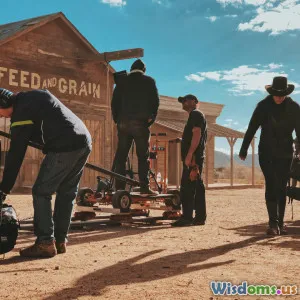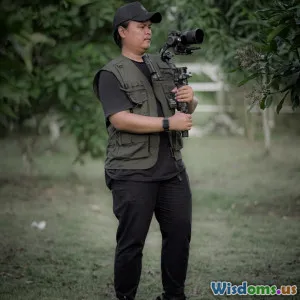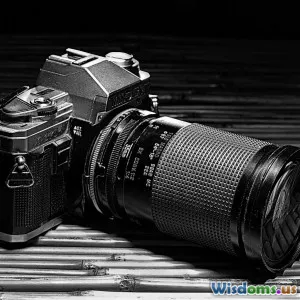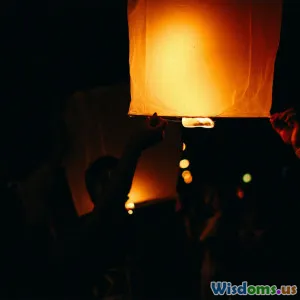
Spotlight on Short Films
8 min read Explore the dynamic world of short films—discover their creative power, impact, and how they're shaping the future of cinema. (0 Reviews)
Spotlight on Short Films: Power & Potential of Short Cinema
Introduction
In the sprawling universe of movies, where blockbuster hits and celebrated feature-length productions dominate the limelight, short films exist as a unique and often underrated gem. Despite their brevity, these mini-masterpieces condense the essence of storytelling, evoke strong emotional responses, and showcase remarkable creativity. Why do short films merit such attention? Because they serve as a powerful incubator for original ideas, launchpads for emerging filmmakers, and a medium of artistic experimentation impossible within conventional time constraints.
This article will dive deep into the world of short films—exploring what makes them distinct, how they influence the larger entertainment ecosystem, and why they deserve a prominent place in the hearts of cinephiles and creators alike.
Defining the Short Film: More Than Just 'Short'
A short film typically runs anywhere between 1 minute to 40 minutes, significantly shorter than the traditional 90+ minute feature. But its condensed format is not a limitation—it's an opportunity. Low budgets and abbreviated runtimes compel filmmakers to be economical with storytelling, focusing sharply on essential elements like character development, themes, and mood.
Historical Context
The origins of short films trace back to the birth of motion pictures in the late 19th century. Early pioneers like Georges Méliès and the Lumière brothers crafted brief visual stories due to technological constraints. Over time, short films evolved from mere novelties to artistic expressions and experimental canvases.
Diverse Genres and Styles
Short films span countless genres—from heartwarming dramas and high-concept science fiction to animated tales and documentary shorts. The flexibility of the short film format attracts a spectrum of creators, including those who experiment with narrative structure, visual effects, and hybrid formats.
Consider Pixar’s iconic shorts, such as “Bao,” which won an Academy Award in 2019. These masterpieces often serve as testing grounds for new storytelling techniques and animation styles.
The Artistic Merit: Crafting Impact in Minutes
Short films demand precision. With less screen time, every frame and line must resonate with purpose.
Economy of Storytelling
Unlike feature films that unfold stories over lengthy arcs, short films rely on concise storytelling that often ends with an impactful twist or a poignant reflection. This efficiency forces filmmakers to hone skills like narrative minimalism and visual symbolism.
Emotional Resonance and Thematic Focus
A noteworthy short film doesn’t require sprawling plots. Its emotional heft frequently stems from universal themes—love, loss, identity, or social justice—captured in a moment, scene, or idea.
For instance, “The Silent Child,” a 20-minute film about a deaf girl excluded from communication, won the 2018 Oscar for Best Live Action Short Film. It highlights how brief storytelling can spur awareness and empathy.
Innovation and Experimentation
Short films are a playground for innovation. Freed from commercial pressures, creators experiment boldly with things like non-linear narratives, abstract imagery, or unique soundscapes. This spirit advances cinematic language and influences long-form cinema too.
Industry Influence: The Short Film Ecosystem
Short films hold a vital place within the film industry, nurturing talent and shaping trends.
Launchpad for Emerging Filmmakers
Many acclaimed directors and actors began with short films. Directors like Martin Scorsese and Damien Chazelle used shorts to showcase their vision, refine their craft, and gain industry attention. Today, festivals like Sundance and Cannes recognize shorts with dedicated categories, elevating new voices.
Economic Accessibility & Digital Platforms
Producing a short film generally requires a fraction of the budget of a feature, making filmmaking more accessible worldwide. Online platforms such as Vimeo, YouTube, and newer streaming services offer global distribution channels that connect creators directly with audiences. This democratization fosters diversity in storytelling and broad representation.
Educational Impact
Film schools use short films as training exercises where students confront real-world challenges of production, editing, and narrative pacing. Some shorts develop into full features or inspire mainstream projects.
Festival Circuit and Awards
Short film festivals like Palm Springs ShortsFest and Toronto International Film Festival’s short programs have become vital showcases of innovation and social commentary. The prestige and network effects can launch careers and trigger meaningful conversations.
Audience Engagement: Why Viewers Should Care
Although short films often live in niche circles, their appeal is profound and growing.
Time-Efficient Entertainment
In an age of growing content saturation and shrinking attention spans, short films provide a compact but emotionally rewarding cinematic experience. Viewers can enjoy storytelling bursts that fit into breaks or commutes.
Cultural and Social Commentary
Short films frequently tackle urgent social issues and marginalized perspectives overlooked by mainstream cinema. For instance, the anthology series "Pulse: A Stomp Odyssey" uses a series of short dance films from global cultures to celebrate human expression.
Encouragement of Curiosity and Discovery
Exploring shorts introduces viewers to experimental forms and global voices less visible in Hollywood-driven markets. It challenges audiences and expands their cinematic horizons.
Conclusion
Short films are far more than a footnote in the cinematic world; they are incubators of creativity, empathy, and innovation. By distilling storytelling to its essence, they confront filmmakers and audiences with raw emotion, bold ideas, and new artistic languages. Whether to discover cutting-edge talents or experience a flash of cinematic brilliance, short films offer compelling and unforgettable experiences.
In supporting, watching, or creating short films, we participate in a vital tradition that keeps the art of cinema vibrant, inclusive, and continually evolving. Next time you find yourself with a few minutes to spare, dive into a short film—you might just witness the future of storytelling unfolding frame by frame.
References:
- Academy Awards Database: Best Live Action Short Film Winners
- Sundance Film Festival Archives
- "The Power of Short Films" – Filmmaker Magazine, 2022
- Vimeo Staff Picks Collection
Rate the Post
User Reviews
Popular Posts





















